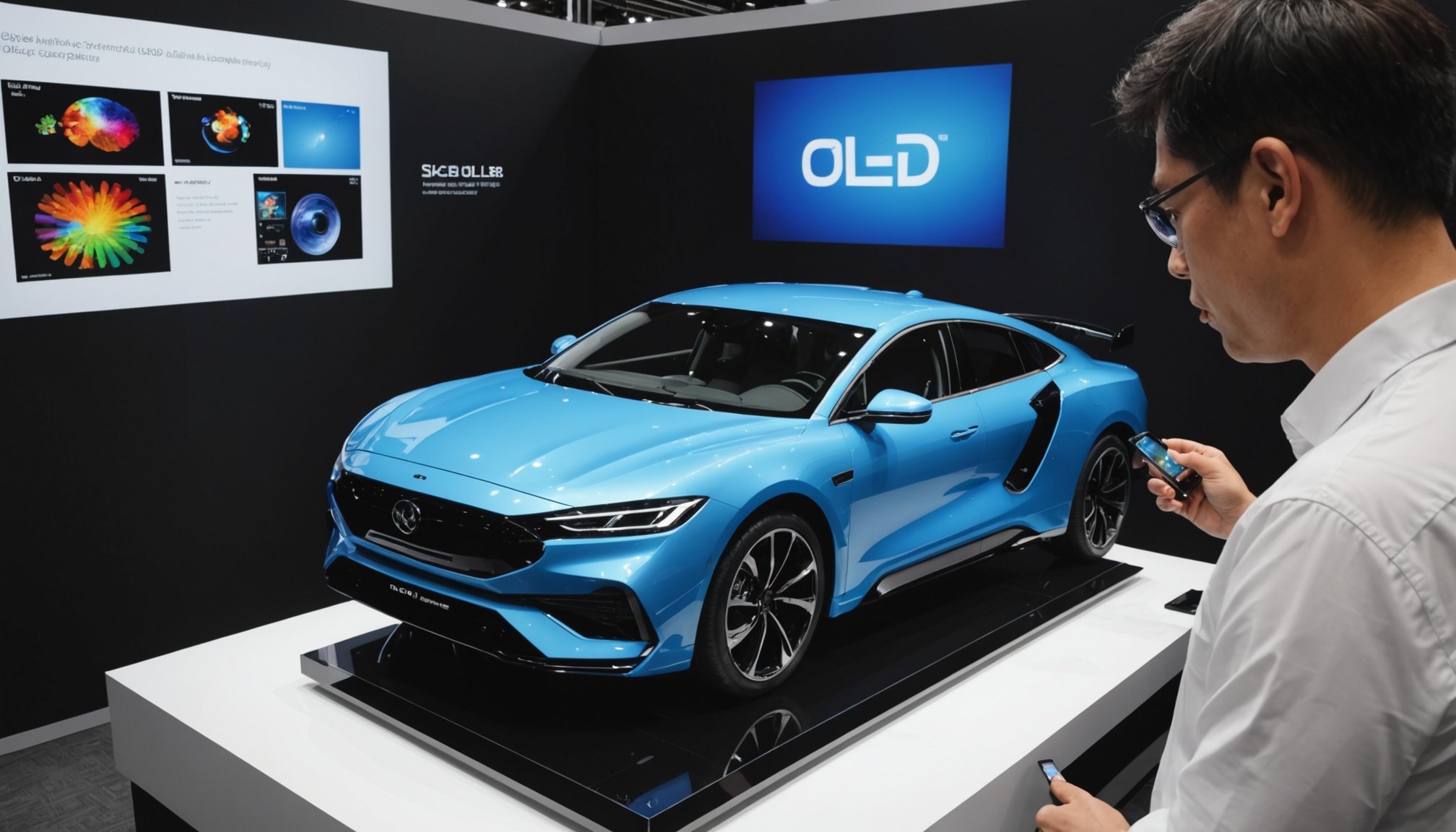Unveiling Cutting-Edge Innovations in OLED Technology: Boosting Visual Display Excellence
The Evolution of OLED Technology
OLED (Organic Light-Emitting Diode) technology has been a game-changer in the world of visual displays, offering unparalleled picture quality, energy efficiency, and design flexibility. Since its introduction, OLED has continuously evolved, incorporating new innovations that enhance its performance and appeal.
From Plasma to OLED: A Journey of Improvement
In the past, plasma TVs were praised for their satisfactory image quality and reasonable prices, despite their higher energy consumption compared to LCDs[1]. However, with the advent of OLED technology, the bar for display quality has been significantly raised. OLED TVs, which emerged in 2013, are now considered the pinnacle of display technology, offering an unprecedented depth of field and color nuances thanks to the use of a chemical substance that illuminates when an electric current is applied[1].
Additional reading : Unravel the excitement: your next zombies mystery box awaits!
Cutting-Edge Innovations in OLED Displays
Several recent innovations have further elevated the capabilities of OLED displays, making them even more appealing for various applications, from gaming and entertainment to professional use.
Quantum Dot OLED (QD-OLED) Technology
One of the most significant advancements is the integration of Quantum Dot technology into OLED displays, known as QD-OLED. This technology combines the benefits of OLED with the color accuracy and vibrancy of Quantum Dots. QD-OLED screens use nanocrystals that emit light when stimulated by backlighting, resulting in more vivid and natural colors with a wider color gamut[2].
In parallel : Transforming customer support with ai: unveiling the latest trends and innovations
Companies like Samsung and Sony have already adopted QD-OLED technology in their high-end TVs. For instance, Samsung’s QD-OLED TVs, such as the S95C and S90D series, offer enhanced color precision and luminosity, making them ideal for professional applications like photo editing and video production[3].
Environmental and Economic Benefits
The latest innovations in QD-OLED technology also focus on sustainability and cost efficiency.
Recycling Quantum Dot Ink
Samsung Display has developed a method to recycle the Quantum Dot ink used in the production of QD-OLED screens. Previously, about 20% of this ink was wasted during the manufacturing process. The new technology allows for the recovery and treatment of up to 80% of this previously wasted ink, resulting in significant economic and environmental benefits. This innovation is expected to save Samsung around 10 billion won (approximately $7.3 million) annually and could lead to more affordable QD-OLED TVs and monitors[3].
Enhanced Performance and Energy Efficiency
OLED displays are renowned for their high picture quality, but recent advancements have also improved their performance and energy efficiency.
Higher Luminosity and Color Accuracy
The QD-OLED technology, for example, achieves a luminosity of 1,000 nits in SDR, significantly higher than the 600 nits of previous models. This makes these screens highly suitable for use in bright environments and demanding professional applications. The technology also ensures better color accuracy and a wider color gamut, enhancing the overall viewing experience[2].
Practical Applications and User Experience
The impact of these innovations extends beyond just technical specifications, significantly enhancing the user experience across various applications.
Gaming and Entertainment
For gamers, OLED TVs offer a superior experience with faster response times, deeper blacks, and more vibrant colors. The high refresh rates and low input lag make OLED screens ideal for gaming, providing a more immersive and responsive experience.
Smart TVs and Digital Signage
In the realm of smart TVs, OLED technology integrates seamlessly with modern features like voice control, streaming services, and multi-device connectivity. For digital signage, OLED displays offer a sleek, energy-efficient solution with high picture quality, making them perfect for retail, hospitality, and public information displays.
Comparative Analysis of OLED Technologies
Here is a comparative table highlighting the key features of different OLED technologies:
| Technology | Picture Quality | Energy Efficiency | Design Flexibility | Cost |
|---|---|---|---|---|
| OLED | High | High | High | High |
| QD-OLED | Very High | Very High | High | Very High |
| LED | Good | Good | Medium | Medium |
| Plasma | Good | Low | Low | Low |
Quotes and Insights from Industry Experts
- “The QD-OLED technology marks a significant turning point, replacing the phosphor red KSF film of previous models. This innovation offers better color precision, increased luminosity, and greater environmental compliance,” – Expert on X, discussing the new MacBook Pro M4 screens[2].
- “Samsung Display’s new method of recycling Quantum Dot ink is a game-changer. It not only reduces waste but also lowers production costs, making QD-OLED displays more accessible to consumers,” – Samsung Display spokesperson[3].
Future Outlook and Potential Applications
As OLED technology continues to evolve, we can expect even more innovative applications across various sectors.
Transparent OLED Displays
Transparent OLED displays are another area of innovation, offering potential applications in retail, automotive, and even wearable technology. These displays can be integrated into transparent screens, providing a unique and interactive user experience.
OLED in Mobile Devices
While OLED technology is predominantly associated with TVs, it is also making waves in the mobile device market. For instance, Apple’s potential adoption of OLED technology in future MacBook models could significantly enhance the display quality and energy efficiency of these devices[2].
Practical Advice for Consumers
When considering an OLED TV or any OLED display, here are some practical tips to keep in mind:
- Check the Refresh Rate: For gaming and fast-paced content, look for displays with high refresh rates to ensure a smooth viewing experience.
- Energy Efficiency: OLED displays are generally energy-efficient, but check the specific model’s power consumption to ensure it aligns with your needs.
- Color Accuracy: If color accuracy is crucial for your use case (e.g., professional graphic design), opt for QD-OLED or high-end OLED models.
- Budget: While OLED displays can be pricey, consider the long-term benefits and the potential for lower energy costs.
The advancements in OLED technology are revolutionizing the way we experience visual content. From the integration of Quantum Dot technology to enhanced energy efficiency and design flexibility, OLED displays are setting new standards in picture quality and user experience. As these innovations continue to evolve, we can expect even more exciting developments in the world of display technology, making our screens not just better but also more sustainable and accessible.











